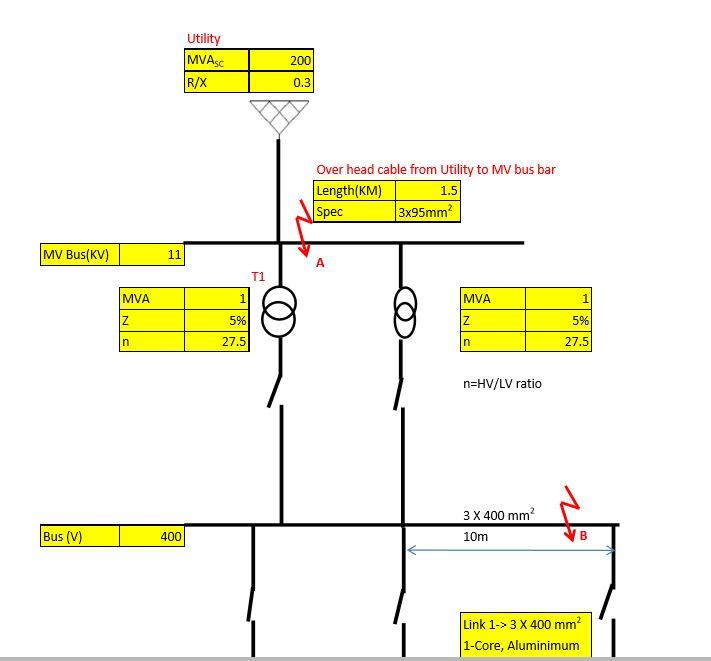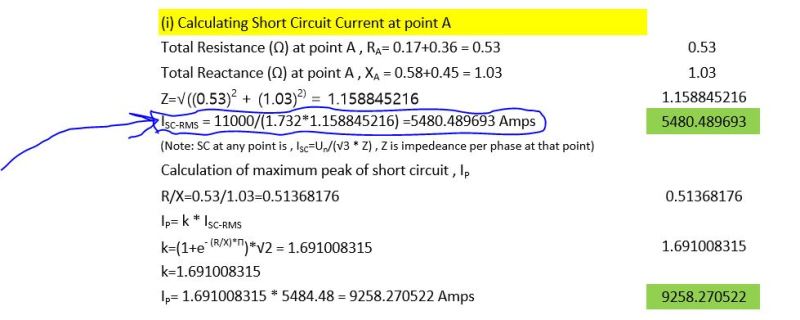Dear All,
I know following two parameters
a) Maximum three phase fault current in amperes (A) and phase angle in degrees (B).
I want to calculate the positive sequence resistance (R) and reactance (X) from above two variables for a symmetric system. I couldn't figure out a way to find R and X values using just these two parameters. However I noted somebody has calculated this using following formula for same purpose (unfortunately couldn’t verify who did this in my workplace).
R = A * COS (PI()*B/180) X = A * SIN (PI()*B/180) where A is the three phase fault current and B is the phase angle
If someone can guide me to figure out the correct formula and the relation above, please
Thanks
I know following two parameters
a) Maximum three phase fault current in amperes (A) and phase angle in degrees (B).
I want to calculate the positive sequence resistance (R) and reactance (X) from above two variables for a symmetric system. I couldn't figure out a way to find R and X values using just these two parameters. However I noted somebody has calculated this using following formula for same purpose (unfortunately couldn’t verify who did this in my workplace).
R = A * COS (PI()*B/180) X = A * SIN (PI()*B/180) where A is the three phase fault current and B is the phase angle
If someone can guide me to figure out the correct formula and the relation above, please
Thanks


